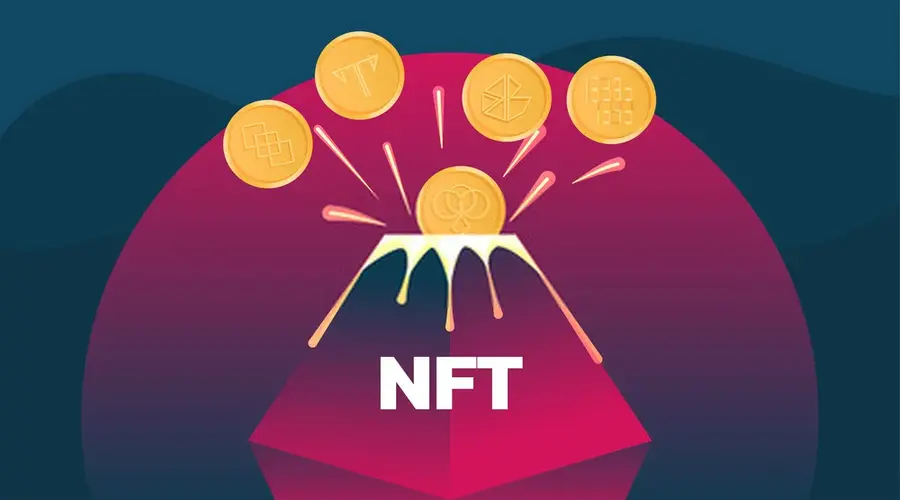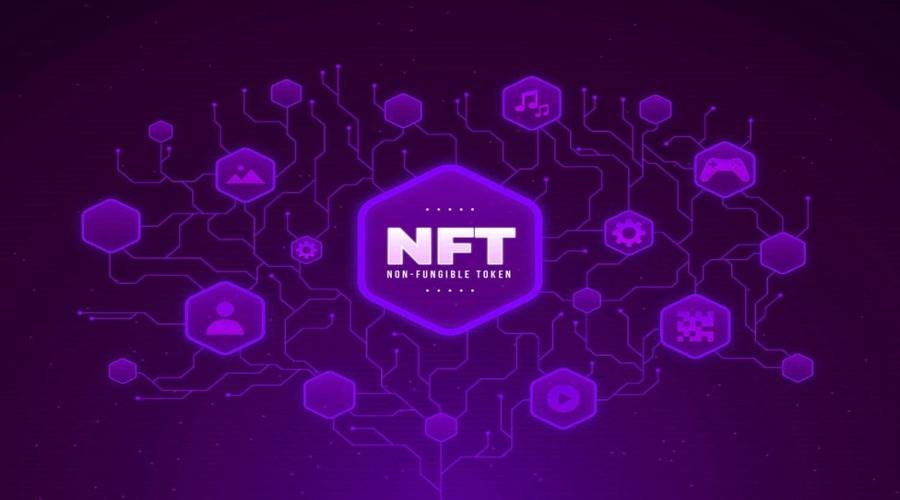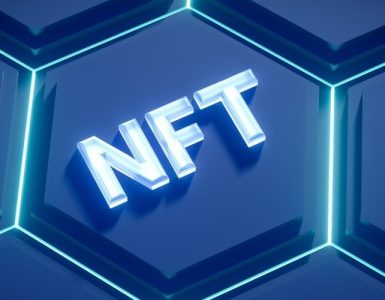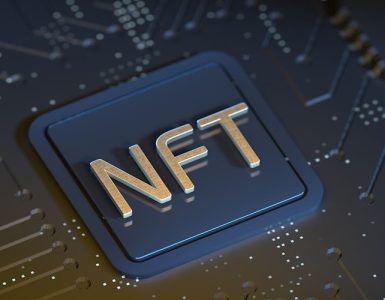In recent years, Non-Fungible Tokens (NFTs) have gained immense popularity in the digital world. NFTs represent unique digital assets that can be bought, sold, and traded on various marketplaces and platforms. As the demand for NFTs continues to grow, the need for secure cross-chain NFT marketplaces and trading platforms becomes increasingly important. This article will delve into the concept of secure cross-chain NFT marketplaces, their significance, and how they are revolutionizing the NFT ecosystem.
Understanding NFT Marketplaces
NFT marketplaces are online platforms that facilitate the buying, selling, and trading of non-fungible tokens. These tokens can represent various digital assets, including artwork, collectibles, virtual real estate, and more. NFT marketplaces have gained significant attention due to the high-profile sales and the ability to establish ownership and provenance of digital assets.
The Importance of Cross-Chain Functionality
Cross-chain functionality refers to the ability of NFT marketplaces and trading platforms to interact and transact across multiple blockchain networks. Currently, NFTs primarily exist on blockchain networks such as Ethereum. However, the lack of interoperability between different blockchain networks limits the potential of NFTs and hinders their widespread adoption.
Security Challenges in NFT Trading
- Smart Contract Vulnerabilities: NFTs are often represented by smart contracts, which can contain vulnerabilities that could be exploited by malicious actors. These vulnerabilities may include coding errors, logic flaws, or even intentional backdoors.
- Phishing and Scams: Due to the increasing popularity of NFTs, scammers may create fake NFT marketplaces or impersonate legitimate platforms to deceive users. Phishing attacks through emails or fraudulent websites can trick users into providing sensitive information or transferring their NFTs to the wrong address.
- Lack of Regulation: The NFT market is relatively new, and there is a lack of comprehensive regulations governing it. This absence of clear guidelines makes it challenging to address fraudulent activities, establish standards for security practices, and protect the rights of buyers and sellers.
- Inadequate KYC/AML Procedures: Know Your Customer (KYC) and Anti-Money Laundering (AML) procedures are essential for verifying the identities of NFT buyers and sellers, as well as preventing illegal activities. However, not all platforms have robust KYC/AML processes in place, leaving room for potential misuse of NFTs.
- Platform Security Breaches: NFT trading platforms can be targeted by hackers aiming to gain unauthorized access to user accounts or steal valuable digital assets. Poor security practices, such as weak passwords, lack of two-factor authentication, or insufficient encryption, can make platforms vulnerable to breaches.
- Ownership Disputes: NFT ownership disputes can arise due to various factors, including stolen private keys, unauthorized transfers, or disputed intellectual property rights. Resolving these disputes can be challenging, as blockchain transactions are often irreversible and lack centralized authority.
- Scalability and Network Congestion: Some blockchain networks, like Ethereum, experience scalability issues and network congestion during periods of high demand. This congestion can lead to delays in NFT transactions, increased transaction fees, and potential security risks.
- Metadata Manipulation: The metadata associated with NFTs, such as the artwork description or provenance information, can be manipulated or falsified. This can mislead buyers and undermine trust in the authenticity and value of NFTs.
- Custodial Risks: When users store their NFTs on custodial platforms, they rely on the platform’s security measures to protect their assets. However, custodial risks exist, including the risk of platform hacks or insider threats that could compromise the security of stored NFTs.
- Cross-Chain Interoperability: As NFTs gain popularity on different blockchain networks, achieving cross-chain interoperability becomes crucial. Ensuring secure cross-chain transfers and interactions between different blockchains presents technical challenges that need to be addressed to avoid security vulnerabilities.
It is essential for NFT marketplaces and platforms to address these security challenges to foster a safe and trustworthy environment for NFT trading. Implementing robust security measures, promoting user education, and advocating for regulatory frameworks can contribute to enhancing the security of the NFT ecosystem.

Benefits of Secure Cross-Chain NFT Marketplaces
- Increased Liquidity: Cross-chain functionality allows NFTs to be traded across different blockchain networks, expanding the potential buyer base and increasing liquidity. This opens up more opportunities for creators and collectors to find interested buyers and enhance the overall trading experience.
- Enhanced Security: Secure cross-chain NFT marketplaces distribute the risk associated with trading NFTs across multiple blockchain networks. This reduces the impact of potential security breaches or network vulnerabilities on the overall NFT ecosystem, providing users with increased confidence in the security of their digital assets.
- Improved Market Accessibility: Cross-chain NFT marketplaces make it easier for users to access and trade NFTs across various blockchain networks. This eliminates the need for users to navigate multiple platforms or perform complex conversions, simplifying the user experience and making the NFT market more accessible to a broader audience.
- Interoperability and Flexibility: By leveraging cross-chain functionality, NFT marketplaces enable interoperability between different blockchain networks. This allows NFTs to move seamlessly between blockchains, ensuring that they can be utilized in different applications or ecosystems without being limited to a single network.
- Mitigation of Network Congestion: Cross-chain NFT marketplaces help alleviate network congestion by providing alternative avenues for NFT transactions. During periods of high demand or congestion on a particular blockchain network, users can leverage cross-chain functionality to trade their NFTs on other networks, ensuring smoother transactions and minimizing delays.
- Increased Exposure and Discoverability: Secure cross-chain NFT marketplaces expose NFTs to a wider audience across various blockchain communities. This increased exposure enhances the discoverability of NFTs and provides creators with more opportunities to showcase their work and attract potential buyers from different networks.
- Risk Diversification: By facilitating cross-chain trading, NFT marketplaces allow users to diversify their NFT holdings across different blockchain networks. This reduces the risk of relying solely on a single network and provides users with more options to manage their NFT portfolios effectively.
- Future-Proofing the NFT Ecosystem: As the blockchain landscape evolves, cross-chain functionality becomes increasingly important for the long-term viability of the NFT ecosystem. Secure cross-chain NFT marketplaces embrace this future-proof approach by enabling seamless integration with emerging blockchain networks and technologies.
Secure cross-chain NFT marketplaces offer numerous benefits, including increased liquidity, enhanced security, improved accessibility, and the ability to leverage cross-chain interoperability. These advantages contribute to a more robust and dynamic NFT ecosystem that can adapt to the evolving needs and demands of creators, collectors, and investors.
Implementing Cross-Chain Functionality
To achieve cross-chain functionality, NFT marketplaces and trading platforms can utilize various technologies, such as:
- Wrapped Tokens: Wrapping NFTs into standardized tokens allows them to be transferred across different blockchain networks.
- Bridges and Interoperability Protocols: Bridges and protocols enable communication and interoperability between disparate blockchain networks, facilitating the cross-chain transfer of NFTs.
Enhancing Security Measures
To ensure secure cross-chain NFT trading, platforms can implement the following security measures:
- Multi-Signature Wallets: Utilizing multi-signature wallets adds an extra layer of security by requiring multiple parties to authorize transactions.
- Audits and Code Reviews: Regular security audits and code reviews of smart contracts help identify and mitigate potential vulnerabilities.
- Two-Factor Authentication: Implementing two-factor authentication provides an additional security barrier against unauthorized access.
Regulatory Considerations
As the NFT market continues to evolve, regulatory considerations become crucial to safeguarding the interests of participants. Governments and regulatory bodies are beginning to address NFT-related issues, including intellectual property rights, tax implications, and consumer protection. Regulation plays a vital role in ensuring the stability and protection of participants in the NFT market. Some key regulatory considerations include establishing frameworks for intellectual property rights, consumer protection, taxation, and anti-money laundering measures. As the NFT market continues to evolve, governments and regulatory bodies are recognizing the need to address these considerations to safeguard the interests of buyers, sellers, and creators. Clear regulations provide clarity and accountability, fostering a trustworthy and compliant environment for NFT trading while promoting the growth and legitimacy of the industry.
The Future of Cross-Chain NFT Marketplaces
The future of cross-chain NFT marketplaces is promising. With advancements in blockchain technology and increased awareness of NFTs, we can expect to see more secure and efficient cross-chain platforms emerge. Interoperability between blockchain networks will open up new possibilities for creators, collectors, and investors, leading to a more vibrant and accessible NFT ecosystem.
Conclusion
Secure cross-chain NFT marketplaces and trading platforms are revolutionizing the way NFTs are bought, sold, and traded. By enabling cross-chain functionality and implementing robust security measures, these platforms offer increased liquidity, enhanced security, and improved user experiences. As the NFT market continues to evolve, it is essential for marketplaces and platforms to prioritize security and stay abreast of regulatory developments to foster a trustworthy and thriving ecosystem.
FAQs
Q1: How do NFT marketplaces ensure the authenticity of digital assets? NFT marketplaces utilize blockchain technology to establish a unique digital fingerprint for each asset, ensuring its authenticity and provenance.
Q2: Can I trade NFTs across different blockchain networks? With the emergence of cross-chain functionality, it is becoming possible to trade NFTs across different blockchain networks, expanding their reach and liquidity.
Q3: Are NFTs subject to copyright laws? Copyright laws apply to the underlying content of NFTs, such as artwork or music. However, ownership of an NFT does not grant copyright ownership unless explicitly stated.
Q4: What are some popular cross-chain NFT marketplaces? Some popular cross-chain NFT marketplaces include OpenSea, Rarible, and Binance NFT.
Q5: How can I ensure the security of my NFT investments? To secure your NFT investments, choose reputable marketplaces, enable two-factor authentication, and carefully review smart contracts before engaging in transactions.





